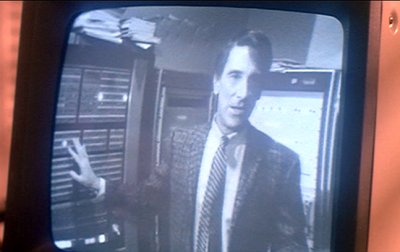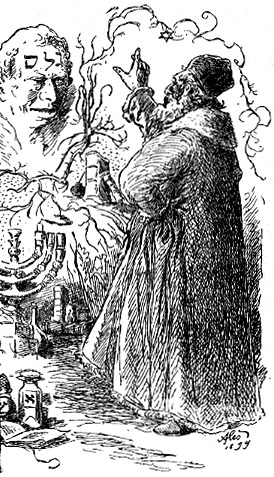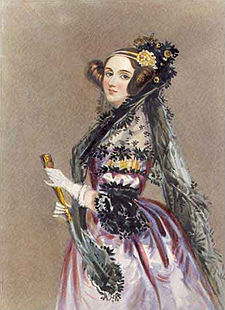WarGames and the Persistence of the Hacker [Santa Fe Institute and Center for Contemporary Arts, Science on Screen]
WarGames and the Persistence of the Hacker
Simon DeDeo
simon[at]santafe.edu
Informal Public Lecture for Science on Screen, Thursday 8 March 2012, 7 pm
[back to popular articles / back to main page]

To talk about WarGames, the film, is, in my case and perhaps yours, to go back to childhood. The acceleration of technology that some of us at the Santa Fe Institute have described makes the world appear, to use William Gibson’s phase, as “an endless digital now.” [1] So it is tempting to see this film, about a mad computer and the jovial stage of the Cold War, through a haze of nostalgia — nostalgia for that liminal state when “the cloud” was just a wisp. Like a fog it seemed possible, even, that it might evaporate.
To show how far we’ve come: at the time of this film, the fastest computer in the world was the Cray X-MP. It cost about ten million dollars, and today it’s a hundred times slower than the standard machine you take to school or find on your desk at work.
So, change — unbelievably rapid change. But if you talk to others at the Institute, you get a story, not of change, but of persistence: the things we build change, but our social patterns, how we live — this changes far more slowly. WarGames is a film about machines that became outdated more quickly than the decade’s slang, but it is also a film about a permanent feature of the computational world.
The hacker.
It is hard to pin down exactly what it means to be a hacker. In the 1970s — the birth of the guild, as it were, in the technical universities and the first computer companies — to be a hacker meant to be someone in love with machines for their own sake, who realized their inner nature. [2] While the regular academics were using computers to simulate jet engines, the hackers invented electronic music and the computer game. The first music played by a computer — the TX-O in 1959 — included themes from the fugues of J.S. Bach, a absolute hacker classic.
By the 1980s, the time of this film, the first computer networks had appeared. There was an Alice in Wonderland quality to the experience then: a door in a wall that led to — well, what? In the past, hackers had played with the telephone system, but this was something else altogether: a second system, an alternate world. All of the telephones led to living rooms — all of them, except one.
Today, the battle is one of information: when we think of hackers we think of the Wikileaks scandal, but we also think of people knocking holes in the massive censorship system that is the Great Firewall of China. We think of the ad hoc wireless networks that people set up during the Occupy movement in New York City, and during the revolution in Cairo. I think — and this is a personal wish — we will soon see hackers open up the drug company databases.
The recent arrests of LulzSec, the “zombie botnets” used to blackmail corporations — these point out the essential a-morality of the hacker. But one could also mention Stuxnet, the computer virus that shut down, for a time, the Iranian nuclear program. This kind of hack is perhaps best illustrated by the Jewish myth of the Golem, one version of which takes place in 16th Century Prague.
16th Century Prague was a bad time, and a bad place, to be Jewish; in the midst of anti-semetic violence, official and unofficial, the chief rabbi, Loew, is said to have created an artifical man, a Golem, from the mud of the river Veltava.
Doing this makes Rabbi Loew a great magician, perhaps a great synthetic biologist. But what happens next makes him a great hacker. Over time, the Golem goes from protecting Jews to murdering Gentiles, and the balance of power in Prague shifts. Deals are cut, and the Rabbi is faced with the task of shutting down the Golem.

On the Golem’s forehead [3] is written the Hebrew word emet (אמת), meaning “truth”; the Rabbi deactivates the robot by erasing the initial — rightmost — character, an aleph (א), to produce met, meaning “death.” Which, if you think about it, is a rather nice hack. Another story associated with the Golem is that it was set apart from man by being unable to speak — you might say, it fails the Turing test. As you will see in the film tonight, this is not a difficulty for the Golem Matthew Broderick finds. In any case, when Israeli hackers at the Weizmann Institute in 1965 needed a name for their latest machine, they named it after this ambiguous and unstable protector.

What you find in both the historical record and in myth is that when technology and power collide — as they do in the film tonight, of course, but as they will tomorrow, outside this hall — hackers will be found. It might be said, even, that each age gets the hackers it deserves.
There is one more thing I want to bring in — something deeper, something even more persistent than these myths and social phenomena. You might call it the myth-within-the-myth, the question that hackers are said to ask themselves, late at night.
The first hacker — we can go back to the source — was Lady Ada Lovelace. Ada herself is an absolute phenomenon, you couldn’t make her up if you tried. She was the daughter of Lord Byron, the poet, mad, bad, and dangerous to know. Utterly improbable that this woman would do what she did. Hackers do tend to be uninterested in social norms, and Lovelace was no exception. In her time, of course, the 1800s, the social norms were against a woman using her mind, particularly its mathematical part.

Ada’s descendants are with us now, and perhaps some of that Lovelacian, counter-cultural, freaks-and-geeks DNA persists. It certainly did in Alan Turing, a quirky man; we can talk about this more in the Q&A, but perhaps the least realistic thing about WarGames is how deeply normal Matthew Broderick and Ally Sheedy are.
In any case, Lovelace ends up collaborating with Charles Babbage when he invents the first mechanical computer. She writes — and debugs — the first piece of computer code, and she and Babbage correspond back and forth about the nature of computation itself. These letters are like a collaborative rewrite of the Book of Genesis.
Of their machine — the Analytical Engine, the Cray X-MP of 1843 — she writes: “[it] has no pretensions whatever to originate anything. It can do whatever we know how to order it to perform. It can follow analysis; but it has no power of anticipating any analytical relations or truths.” [4]
This is, fundamentally, the question that every hacker asks: is my machine just a machine? Or could it be made into something more? Could it learn something new? Could it teach me something new? Could it think, could it be our equal in mind? Could it be our moral equal?
These questions are at the heart of more than just the film we’re about to see, which is a film about hackers, but also an optimistic fable, spun around the central question that Lady Ada begged nearly two centuries ago.
Thank you all very much for coming, and do stick around for the Q&A. I hope you enjoy the show; if you’ve seen it before, I hope you find something new; if you haven’t, I promise you’re in for a — very silly — treat.
Footnotes
[1]. See “Superexponential long-term trends in information technology” by Béla Nagy, Doyne Farmer, Jessika Trancik and John Paul Gonzales. Technological Forecasting and Social Change 78:8 (2011); or a popular account of this work and the associated performance curves database. For “endless digital now,” see William Gibson’s Distrust That Particular Flavor, or this talk.
[2]. Similar to James Gleick’s Chaos: Making a New Science, Steven Levy’s Hackers: Heroes of the Computer Revolution is more than just the journalistic account of computer pioneers it appears to be. In recounting the early history of “the hacker” at MIT, SAIL and elsewhere, it also presents an influential, thoroughly normative account of the intellectual spirit the hacker embodied. Appropriately enough, it is now freely available from O’Reilly Press, the technical publisher. ESR’s editions of the Jargon File presents another way in to the early, largely pre-PC, culture.
[3]. Though not in the Aleš image that precedes the paragraph. The Golem myth plays a central role for Norbert Wiener, founder of the discipline of cybernetics in the book of the same name. It was the scholar Gershom Scholem who suggested GOLEM to the Weizmann Institute; some more on these connections appears to be available in this reference by Cathy S. Gelbin.
[4]. Ada Lovelace both raises and begs the question in this seminal passage. It plays a lovely organizational device for researcher Margaret Boden in her book on artificial intelligence and creativity, the Creative Mind: Myths and Mechanisms. The myth-within-the-myth has a somewhat Klein-bottle topology, since the drive to secure machines from the inquisitive — but often troublesome — hacker ends up raising profound questions about the mechanization of knowledge. This story is told in Donald Mackenzie’s book Mechanizing Proof: Computing, Risk, and Trust.
Acknowledgements
I thank Nancy Deutsch and Valerie Plame-Wilson (Santa Fe Institute) and Jason Silverman (Center for Contemporary Arts) for organizing the Science on Screen series at the CCA in the Spring of 2012. I’m grateful to Jerry Sabloff for suggesting I take this chance to look into the persistence of the hacker myth. I’m grateful for press coverage of the series, by Mary-Charlotte at KSFR’s Radio Café, Staci Matlock in the New Mexican, and Casey St. Charnez on santafe.com.
Image credits
In a still from the film, the mysterious Professor Falken and the IBM AN/FSQ-7, “a key component of the Semi Automatic Ground Environment (SAGE) system used to track and intercept enemy bombers in the late fifties and sixties” [ref]. Golem and Rabbi Loew, drawing by Mikoláš Aleš (note the “bottles of aleph” in the Rabbi’s laboratory; here the inscription on the creation’s forehead is not אמת, truth, but גולם, Golem.) GOLEM at the Weizmann Institute, photo appearing on pages by Jacob Itzikowitz. Lady Ada, Countess of Lovelace, image held by the Science Museum, London.




